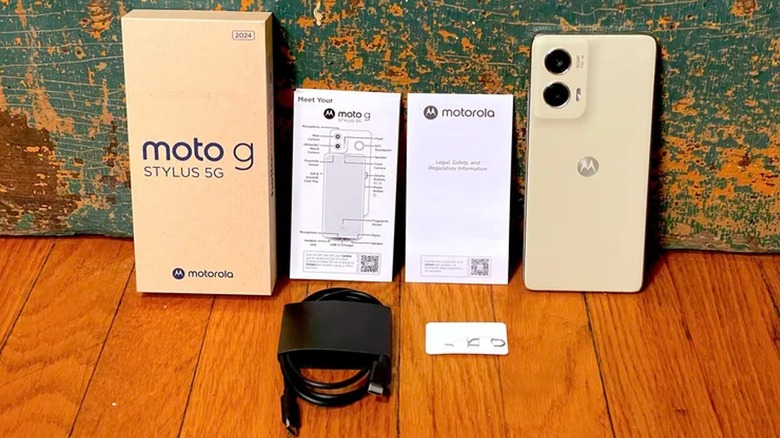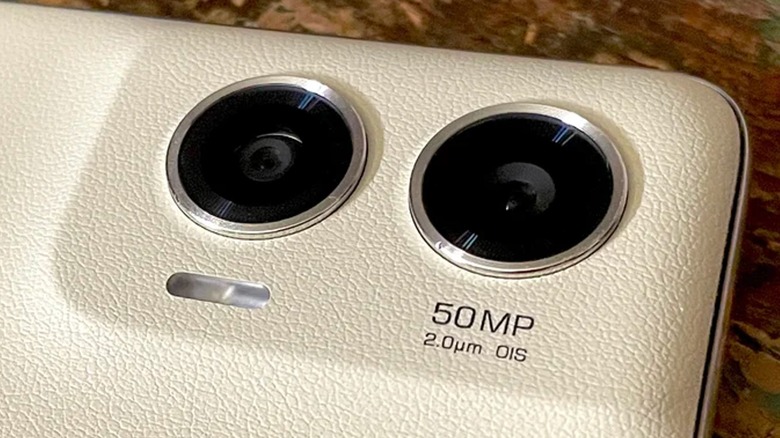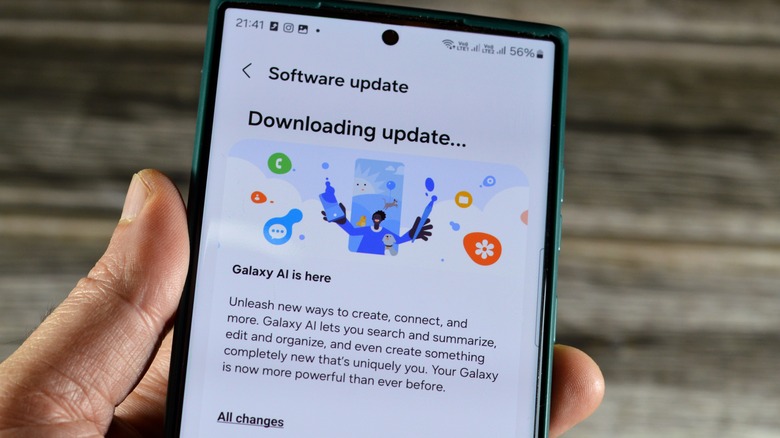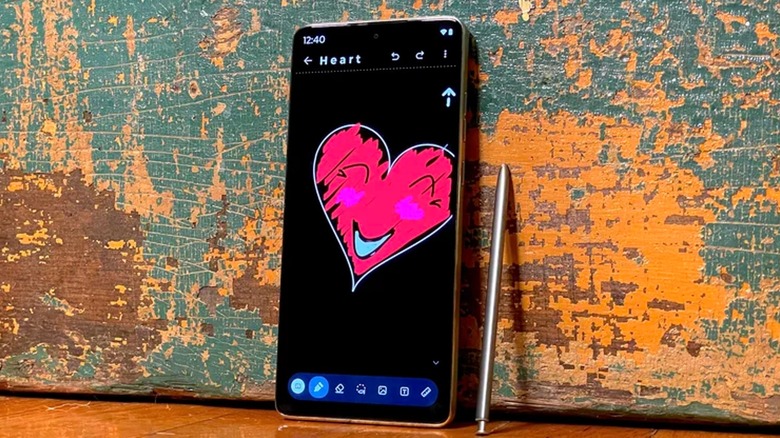We may receive a commission on purchases made from links.
For those looking to buy a mid-range smartphone in 2024, both the Moto G Stylus and the Samsung Galaxy A35 stand out as compelling options. Retailing for the same price tag of $400, both devices offer a good balance of performance, features, and affordability.
Aside from the price, the Moto G Stylus and Samsung Galaxy A35 have a few things in common, such as OLED displays, large 5,000mAh batteries, and expandable storage options of up to 1TB with a microSD card. However, they each bring unique strengths to the table. The Moto G Stylus, includes the titular stylus, making it ideal for note-taking, sketching, and precision navigation. On the other hand, the Samsung Galaxy A35 is part of Samsung’s popular A-series, known for its reliability and superior software experience.
The key differences between these two devices extend beyond their defining characteristics. From display quality and processing power, to camera capabilities and software experience, each phone offers a unique blend of strengths that cater to different user preferences and priorities. Here are some of the biggest differences between the two phones that should help you make an informed decision.
Moto G Stylus is better-looking, but not as durable

Rob Rich/SlashGear
The Moto G Stylus and the Galaxy A35 have similar front designs, both featuring punch-hole cameras and nearly identical display sizes. However, the Moto G Stylus stands out with its vegan leather finish, giving it a more premium appearance. It is also 20 grams lighter than the Galaxy A35, which weighs 209 grams. The Galaxy A35 features a shiny plastic back, making it more susceptible to fingerprints and smudges.
Although the Moto G Stylus is the more stylish device, it has a significant disadvantage — it only has an IP52 water and dust resistance rating, providing basic protection against minor splashes and dust. In other words, it’s not suitable for swimming or exposure to heavy rain. The Galaxy A35, on the other hand, has a flagship-level IP67 water and dust resistance rating, making it more suitable for extreme conditions or activities involving significant exposure to water or dust.
Samsung Galaxy A35 has a superior display
Both the Samsung Galaxy A35 and the Moto G Stylus feature OLED panels with a 120Hz refresh rate, ensuring smooth and responsive visuals. The Moto G Stylus boasts a larger 6.7-inch display, while the Galaxy A35 offers a slightly smaller 6.6-inch Super AMOLED screen. One key advantage of the Moto G Stylus is its higher peak brightness of 1,200 nits, compared to the Galaxy A35’s 1,000 nits.
The Moto G Stylus has a superior screen-to-body ratio of 87.39%, but its bezels are unevenly distributed, affecting its overall aesthetic. On the other hand, the Samsung Galaxy A35 features a more balanced design with consistently distributed bezels, resulting in a slightly lower screen-to-body ratio of 84.75%.
The Moto G Stylus stands out with its peak brightness and larger display, making it great for those who prioritize screen size and visibility. On the other hand, the Samsung Galaxy A35’s Super AMOLED panel offers vibrant colors and a balanced design, appealing to those who value color quality and aesthetics.
Moto G Stylus has better specs and a slightly better camera

Rob Rich/Slash Gear
The Galaxy A35 is powered by Samsung’s Exynos 1380 processor, while the Moto G Stylus 5G runs on the Snapdragon 6 Gen 1 processor. According to NanoReview’s comprehensive benchmark tests, the Exynos 1380 processor performs slightly better than the Snapdragon 6 Gen 1. However, the Moto G Stylus 5G comes with 8GB of RAM, which is more than the Galaxy A35’s 6GB configuration. The additional RAM allows for improved multitasking, enabling users to switch between apps, run high-end games, and handle resource-intensive tasks without experiencing any slowdowns or lag.
The Samsung Galaxy A35 is equipped with a triple-camera array comprising a 50MP primary sensor, an 8MP ultra-wide lens, and a 5MP macro lens. The Moto G Stylus features a dual-camera setup with a 50MP main sensor and a 13MP ultra-wide lens. The front camera is another area where the Moto G Stylus stands out, boasting a 32MP sensor compared to the Galaxy A35’s 13MP front camera. This makes the Moto G Stylus a superior choice for selfie enthusiasts and video calls.
Samsung Galaxy A35 offers more software updates

Tamer A Soliman/Shutterstock
The Moto G Stylus runs on a near-stock version of Android 14, providing a clean, intuitive interface with minimal bloatware. Motorola also includes useful features like Moto Actions, allowing gesture-based shortcuts, and a customizable stylus menu for quick access to note-taking and drawing apps.
On the other hand, the Galaxy A35 utilizes Samsung’s One UI 6.1, which is a feature-rich overlay on top of Android 14. One UI is known for its user-friendly design, extensive customization options, and additional Samsung-exclusive features such as Samsung Pay, Bixby, and a robust security suite.
A key difference between the two devices is their software update policies. The Galaxy A35 stands out with Samsung’s commitment to providing four generations of One UI updates and five years of security updates. In contrast, the Moto G Stylus will receive only one major Android update and three years of security updates. This means that the Galaxy A35 will be supported up to Android 18, while the Moto G Stylus 5G (2024) will only be updated to Android 15.
Moto G Stylus offers wireless charging and a 3.5mm headphone jack

Rob Rich/Slash Gear
Neither the Moto G Stylus nor the Samsung Galaxy A35 include a charger inside the box, reflecting a growing trend among smartphone manufacturers to reduce electronic waste. However, when it comes to charging capabilities, the Moto G Stylus has a notable edge. It offers faster 30W wired charging support, allowing for quicker power-ups compared to the Galaxy A35, which tops out at 25W.
Additionally, the Moto G Stylus supports 15W wireless charging, a convenient feature for users who prefer a cable-free charging experience. The Samsung Galaxy A35, on the other hand, does not offer wireless charging, making the Moto G Stylus a more versatile option in terms of charging technology.
Another notable difference is the inclusion of a 3.5mm headphone jack in the Moto G Stylus, which is not available on the Galaxy A35. However, the Galaxy A35 compensates with more advanced connectivity options, supporting faster Wi-Fi 6 and Bluetooth 5.3, compared to the Moto G Stylus’s Wi-Fi 5 and Bluetooth 5.1.